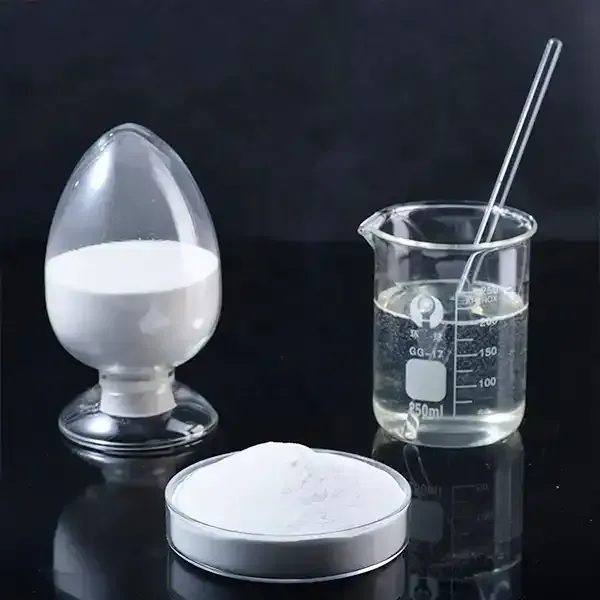The Role and Applications of Cellulose Ethers
Cellulose ethers are a group of cellulose derivatives that have gained significant importance in various industries, including pharmaceuticals, food, cosmetics, and construction. They are formed by the reaction of cellulose, a natural polymer obtained from plant cell walls, with etherifying agents. The unique properties of cellulose ethers, such as their solubility in water, thickening ability, and film-forming capacity, make them invaluable in numerous applications.
One of the most prominent cellulose ethers is methylcellulose (MC), which is derived from cellulose through a methylation process. Methylcellulose is a white, odorless powder that dissolves in hot water to form a gel-like solution, ideal for various applications. In the food industry, it serves as a thickening agent, emulsifier, and stabilizer. For example, MC is widely used in ice creams to improve texture and reduce ice crystal formation, allowing for a smoother, creamier product. Additionally, it is utilized in gluten-free baking as a replacement for gluten, providing structure and elasticity to dough.
Hydroxypropyl methylcellulose (HPMC) is another significant cellulose ether, distinguished by its modified hydroxyl groups. HPMC finds extensive applications in both construction and pharmaceuticals. In construction, it is added to cement and gypsum-based products to enhance workability, extend open time, and improve water retention. This contributes to the durability and strength of building materials, making HPMC an essential ingredient in modern construction techniques.
In the pharmaceutical industry, HPMC is used as a binder and release agent in tablet formulations. Its unique gel-forming properties allow for controlled drug release, promoting therapeutic efficacy and patient compliance. Moreover, HPMC is employed in the production of capsules, owing to its non-toxic nature and ability to dissolve in gastrointestinal fluids.
cellulose ethers

Another noteworthy cellulose ether is carboxymethyl cellulose (CMC), which is produced through the reaction of cellulose with chloroacetic acid. CMC is soluble in water and is widely used in the food industry as a thickening and stabilizing agent. It helps maintain the texture of products like sauces, dressings, and baked goods, contributing to consumer satisfaction. Beyond food, CMC finds applications in personal care products, such as shampoos and lotions, as a stabilizer and thickener.
Cellulose ethers also play a crucial role in the cosmetic industry. They are used as thickening agents in creams and lotions, providing the desired texture and viscosity. Their film-forming abilities enable the creation of waterproof and long-lasting cosmetic products. Furthermore, cellulose ethers are often found in hair care formulations, enhancing the manageability and shine of hair.
In addition to these applications, cellulose ethers demonstrate exceptional versatility in various fields. In agriculture, they are employed as soil conditioners to improve water retention and soil structure. In the paper industry, they serve as additives to enhance the strength and durability of paper products. Furthermore, in the textile industry, cellulose ethers are utilized as sizing agents, improving the weaving process and the quality of fabrics.
Despite their numerous advantages, the production and use of cellulose ethers must be approached with consideration for environmental sustainability. Developing more eco-friendly manufacturing processes and sourcing sustainable raw materials are crucial steps towards minimizing the ecological footprint of cellulose ether production.
In conclusion, cellulose ethers are vital components in various industries, offering unique properties that enhance product performance and quality. Their applications span from food and pharmaceuticals to cosmetics and construction, underscoring their versatility and importance in everyday life. As research and innovation continue to evolve, the potential for cellulose ethers to contribute to sustainable practices and improved product formulations remains promising. The ongoing exploration of cellulose ether derivatives could lead to even more groundbreaking applications, emphasizing the significance of this remarkable group of compounds in the modern world.
-
A Comprehensive Guide to Methyl Ethyl Hydroxyethyl Cellulose: Applications and Industry InsightsNewsNov.24,2025
-
Understanding Methyl 2 Hydroxyethyl Cellulose: Uses, Benefits & Industry InsightsNewsNov.24,2025
-
Hydroxyethyl Methyl Cellulose HEMC: Industrial Uses, Benefits & Future TrendsNewsNov.23,2025
-
HEMC Cellulose: Versatile & Sustainable Industrial Polymer | YoungcelNewsNov.23,2025
-
Methyl Hydroxyethyl Cellulose: Versatile Building Block for Industry & SustainabilityNewsNov.23,2025
-
CAS 9032 42 2: Understanding Polyvinyl Alcohol's Impact on Industry & SustainabilityNewsNov.22,2025




